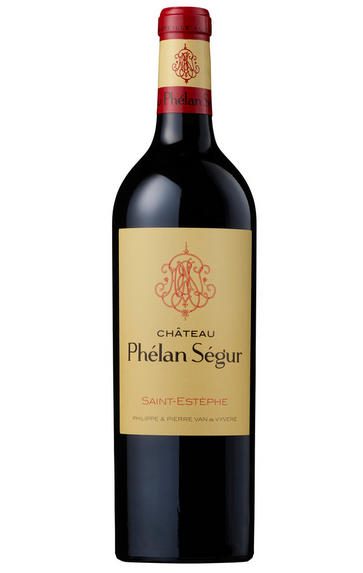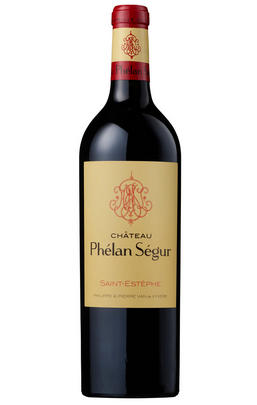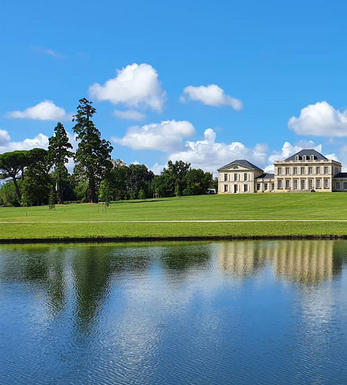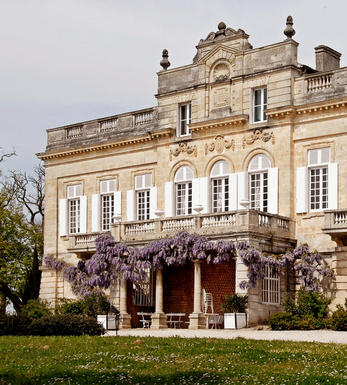
2020 Château Phélan Ségur, St Estèphe, Bordeaux

Critics reviews
Drink 2025 - 2045
Neil Martin, vinous.com (April 2021)
Drink 2028 - 2045
Antonio Galloni, vinous.com (April 2021)
Drink from 2026 to 2042
Jane Anson, Decanter (April 2021)
Drink from 2024 to 2039
Lisa Perrotti-Brown MW, Wine Advocate (May 2021)
James Suckling, jamessuckling.com (April 2021)
Jeb Dunnuck, jebdunnuck.com (May 2021)
About this WINE

Château Phélan Ségur
Château Phélan-Ségur is a St Estèphe property that produces textbook meaty, solid and long-lived St Estèphe. Founded by Irishman Bernard O’Phelan, the estate was developed by his son, Frank, and renamed Phélan Ségur in the early 20th century. It was bought by Xavier Gardinier in 1985 and run by his sons, Thierry and Laurent until 2018, when Philippe Van de Vyvere bought the property.
Phélan-Ségur's 70 hectares of vineyards are well-sited near the Grionde estuary, lying on well-drained gravel soils, bordered by those of Château Montrose and Château Calon-Ségur.
The grand vin is normally a blend of at least 60% Cabernet Sauvignon, with Merlot and a touch of Cabernet Franc and/or Petit Verdot. The grapes are fermented in temperature-controlled stainless steel vats and the wine is then matured in oak barriques (maximum 50% new) for 16 months. Phélan Ségur usually requires at least five to seven years of bottle ageing to show at its best, and the finest vintages can continue improving for up to 15 years.

Saint-Estèphe
Saint-Estèphe is the northernmost of the most important communes of the Médoc and borders Pauillac on its southernmost border, with only a gully and stream separates it from Ch. Lafite. To the north lies the Bas-Médoc.
Saint-Estèphe is defined by the depth of its gravel, which is ubiquitous but of varying depths and occasionally very shallow, when clay predominates. This keeps the soil cooler and wetter than its counterparts so that the wines can appear fresh in lighter vintages, but superbly successful in hot, dry years.
The best châteaux in the south of the commune have the deepest soil and the thickest gravel. Cos d'Estournel has an exceptional terroir with its vineyards being located on a south-facing ridge of gravel with excellent drainage.
Saint-Estèphe is the least gravelly of main Médoc communes and in the north of the commune the vineyards are heavier and more clay-based leading to a rustic style of wine being produced.
The wines can appear austere in youth with a discernable ferric note at some châteaux, but the best typically display good depth of colour, pronounced acidity an tannins in youth and are exceptionally long-lived. At their best, they are the equal of almost any Bordeaux. The well-regarded St Estèphe co-operative controls the production of about half the appellation.
Recommended Châteaux
Cos (Ch. Cos d'Estournel), Ch. Montrose, Ch. Calon-Ségur, Ch. Lafon-Rochet, Ch. Les Ormes de Pez, Ch. Beau-Site, Ch. Cos Labory, Ch. Phélan-Ségur

Cabernet Sauvignon Blend
Cabernet Sauvignon lends itself particularly well in blends with Merlot. This is actually the archetypal Bordeaux blend, though in different proportions in the sub-regions and sometimes topped up with Cabernet Franc, Malbec, and Petit Verdot.
In the Médoc and Graves the percentage of Cabernet Sauvignon in the blend can range from 95% (Mouton-Rothschild) to as low as 40%. It is particularly suited to the dry, warm, free- draining, gravel-rich soils and is responsible for the redolent cassis characteristics as well as the depth of colour, tannic structure and pronounced acidity of Médoc wines. However 100% Cabernet Sauvignon wines can be slightly hollow-tasting in the middle palate and Merlot with its generous, fleshy fruit flavours acts as a perfect foil by filling in this cavity.
In St-Emilion and Pomerol, the blends are Merlot dominated as Cabernet Sauvignon can struggle to ripen there - when it is included, it adds structure and body to the wine. Sassicaia is the most famous Bordeaux blend in Italy and has spawned many imitations, whereby the blend is now firmly established in the New World and particularly in California and Australia.


Buying options
Add to wishlist
Description
Cabernet Sauvignon 54%, Merlot 42%, Cabernet Franc 2%, Petit Verdot 2%
There was a change of ownership (but not of the team) here in 2017. The estate’s trajectory of reliability and over-delivery continues. St Estèphe’s graphite notes are here in abundance, but they are well moderated by the hallmark toasty, almost savoury character of the wine. Its broad shoulders and creamy sensation give pleasure, and there’s a welcome twist of freshness at the finish. The wine always feels like it has more to give, a sure pointer to the benefits of some bottle age.
Drink 2026-2040
wine at a glance
Delivery and quality guarantee